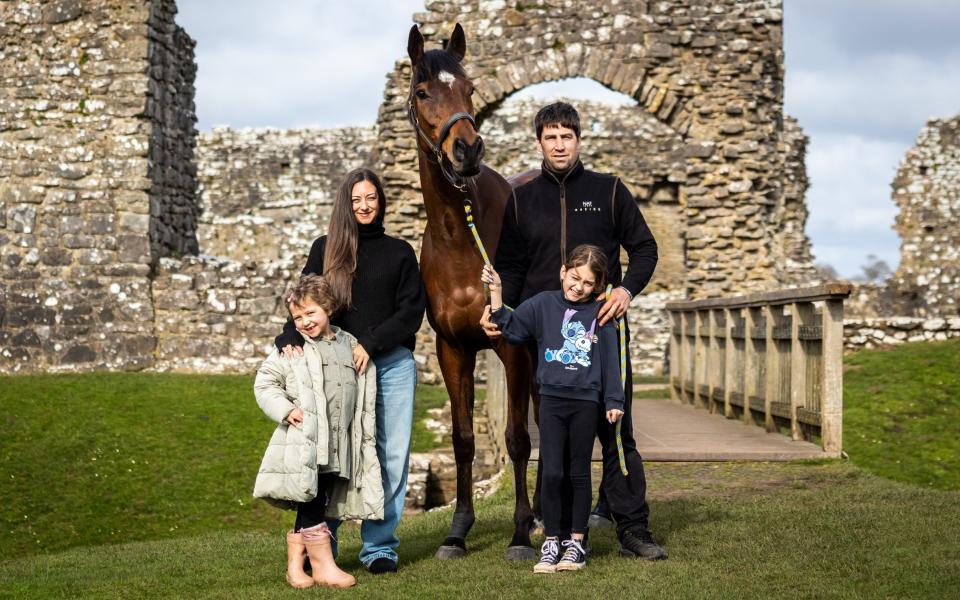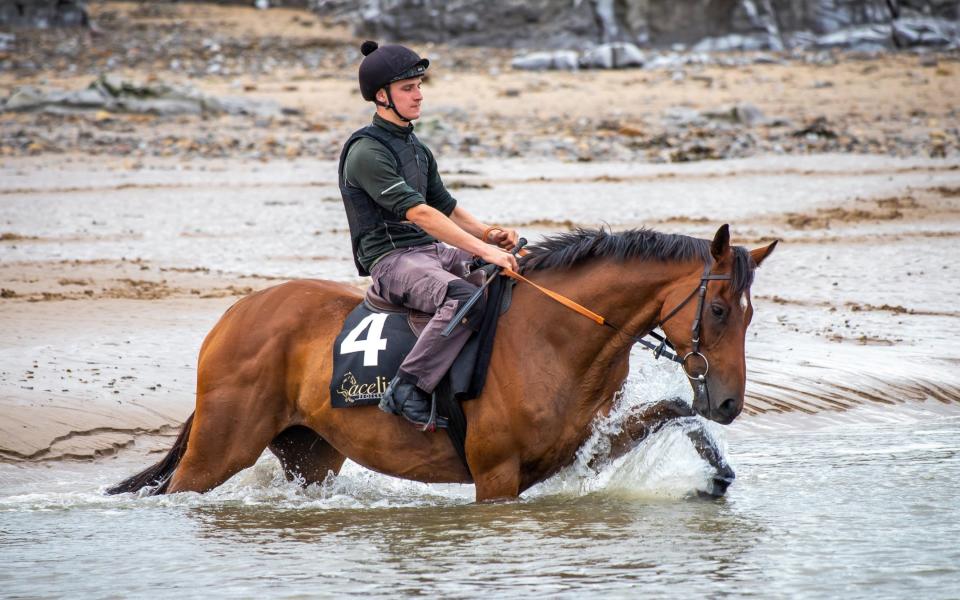‘After our daughter’s leukaemia, it’s amazing what Kitty’s Light has done for us’

It is 43 years since Aldaniti, ridden by former cancer patient Bob Champion, galloped round the Elbow at Aintree to one of the most inspirational victories in the history of sport. It spawned a charity, a book and a film but, above all, it gave hope to those in the depths of treatments which were often as bad as the illness itself.
If Kitty’s Light becomes the first Welsh-trained winner of Saturday’s Randox Grand National since Kirkland in 1905, there will not be a dry eye in South Wales and, more specifically, Noah’s Ark Children’s Hospital in Cardiff. The script for Champions II will have been written.
Just over a year ago, on March 16, while racing was corralled into a corner of the Cotswolds enjoying the Cheltenham Festival, trainer Christian Williams and his wife Charlotte were being given the sobering news that their then five-year-old daughter had leukaemia and that, for the next two months, Noah’s Ark would be their home.
“To cure her they had to take her as close to death without killing her,” explains Williams, using the analogy of a garden overtaken by weeds which has to be sprayed off before the flowers can flourish again. “You meet a big family of people in the hospital and this is for all the kids.”
Now, 13 months in, there is light at the end of the tunnel for Betsy, now six. She still has to take a pill form of chemotherapy every day for the next two years, she visits the hospital once a month and has occasional unscheduled stays if she gets an infection. If she spikes a temperature, she is in Cardiff in 25 minutes and they ring on the way.
Her regular appointment in hospital this Thursday has been put back a week so she can travel up to Liverpool to be a style judge with her sister Tilly, eight – they have been kitted out by River Island – on Friday’s Ladies Day at Aintree and they will stay there to watch Kitty’s Light, a 12-1 shot, in Saturday’s race.
For his part, Kitty’s Light has already done huge amounts for family morale. Last season, aged seven, he completed a unique staying handicap chase treble of Eider Chase, Scottish National and, a week later, the Bet365 Gold Cup. “It was very emotional and gave us a big lift when he won the Scottish National for us last year,” says Williams.
“The Bet365 was a breeze in comparison. There was no real pressure there and, as it was only seven days after two 10-hour journeys and a four-mile race, I knew Jack [Tudor, the jockey] would pull him up if he felt he wasn’t right. Winning there was a bonus.”
‘Sand lends itself to training saying chasers’
Williams, 41, trains next to the ruins of Ogmore Castle, a mile upstream on the Ewenny River from the sea, near Bridgend. It used to be all rugby in these parts of South Wales but as that has declined, so racing along the M4 corridor has become more popular; there is a trainer at every exit.
His uncles, Gareth and Owen, both won rugby caps for Wales but his father Robert, having damaged the anterior cruciate ligament in his knee before they were more commonly repaired, went into the riding-school business and trading horses.
At Brynteg School, Williams was in the same year as Olympic cyclist Nicole Cook and a year above rugby star Gavin Henson. “We’d all be eating breakfast waiting for the school bus and Nicole would cycle past on her way in,” he recalls.
He started point-to-pointing and a connection with Paul Barber got him into Paul Nicholls, eventually as second jockey to Ruby Walsh. Ironically, in 2010, at the start of the season when they brought the second last into the home straight on the Old Course at Cheltenham to reduce fallers, he was brought down at the fence and broke both arms. His mount, Beshabar, recovered to win the Scottish National but, after a long time out with injuries, Williams’s career did not and he retired aged 29.
With no great desire to train he went to Dai Walters near Cardiff for five years and the owner insisted he take out a licence. When he was finished there he moved back to the riding school at Ogmore with three horses. Now, like most of his other 25 horses, Kitty’s Light spends most of his time, day and night, out in a paddock as part of a herd. It may look mucky on a wet day but equine behaviourists will tell you this is the racehorse’s preferred way of life.
His circular natural sand gallop in another paddock is just where the grass wore away with use. He uses one through the dunes which he calls “the rollercoaster” and he has a mile of beach between Ogmore and Porthcawl pretty much to himself. It is “harrowed” twice daily by the sea.
“Someone told me the other day they pay £40,000 a year in gallop maintenance, I don’t spend a penny,” he says. “To think people import sand from Wexford! If it was a one-off you’d say it was a coincidence but a Welsh National, two Scottish Nationals, two Eider Chases, a Bet365 Gold Cup and a Coral Trophy, you’d have to say it lends itself to training staying chasers.”

‘It’s amazing what this horse has done for us’
Williams bought Kitty’s Light for £5,000 from the yearling sales in Newmarket simply because he was by Nathaniel and he thought he might make a jump sire. Later on he sold half to Richard Bedford who was looking to give his father an interest after his mother died. The other half belongs to a syndicate.
For a horse who spends most of his time outside, his coat is gleaming. “He always had a nice way of going,” says his trainer. “He carries himself and has an unbelievable attitude. If he was human he’d always be smiling. He recovered remarkably quickly from his races. Between Ayr and Sandown last year we rode him once, gave him a trot down the beach on the Thursday, and that was all.
“We didn’t think he handled heavy ground but he seemed to at Cheltenham last time. It may be that we ran him quite young and he’s physically stronger now.
“It’s amazing what this horse has done for us when we’ve been going through a tough time. We’re lucky to be in the sport and the more people we can interest in it with horses like this, the better. He’s brought in a lot of people who previously had no interest because of what he’s done for us.
“It’s a privilege to have him. Just think, wouldn’t it be wonderful if he is still travelling at the second last and is in the first six? Wherever you finish you can’t be disappointed with a horse that runs his heart out.”

 Yahoo Sport
Yahoo Sport 





































